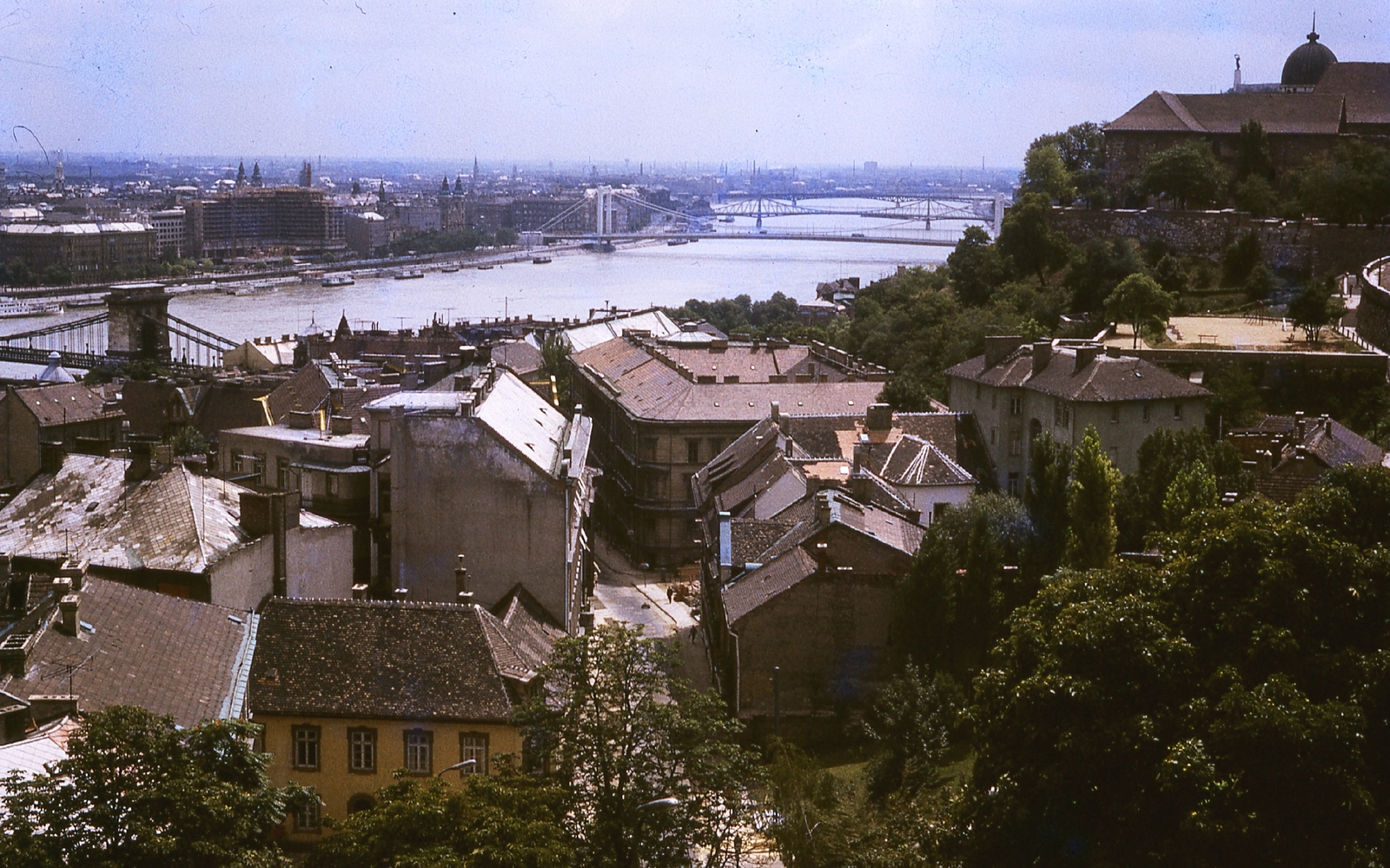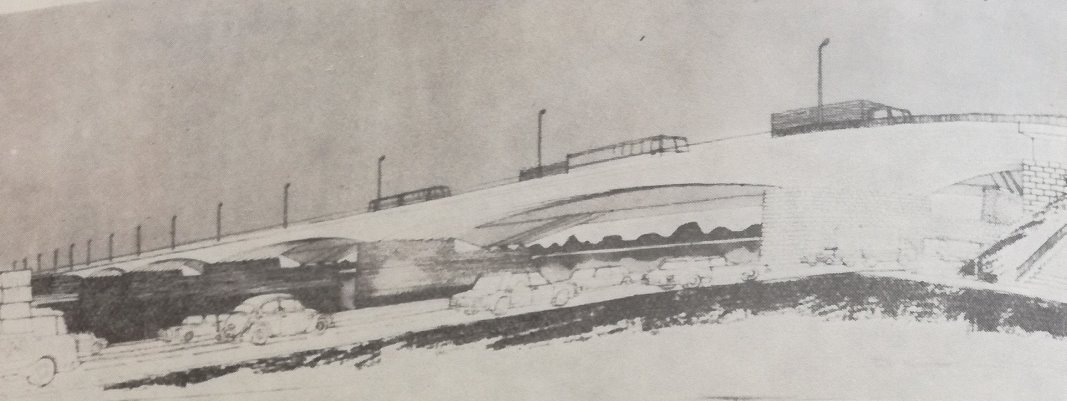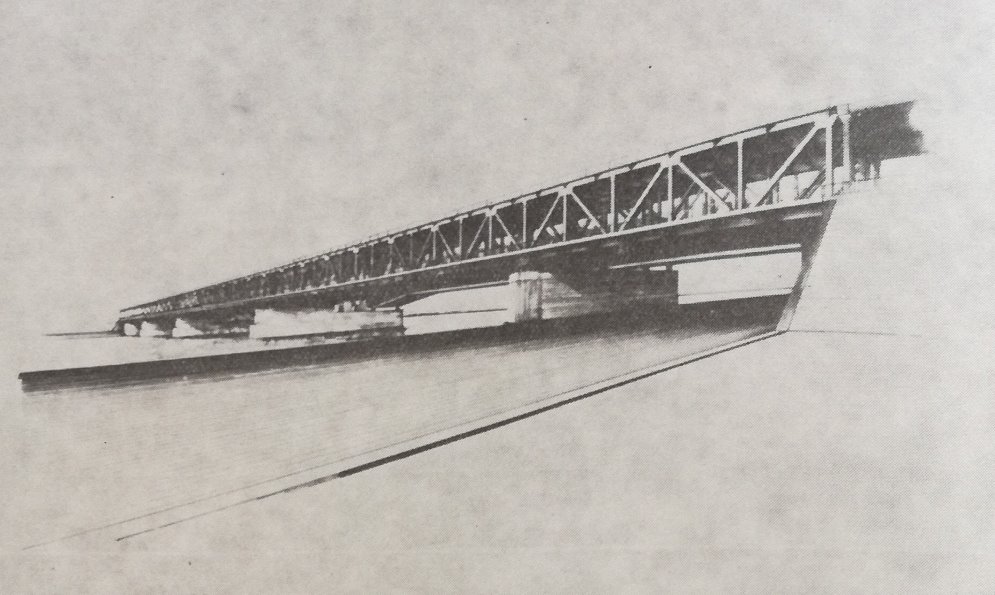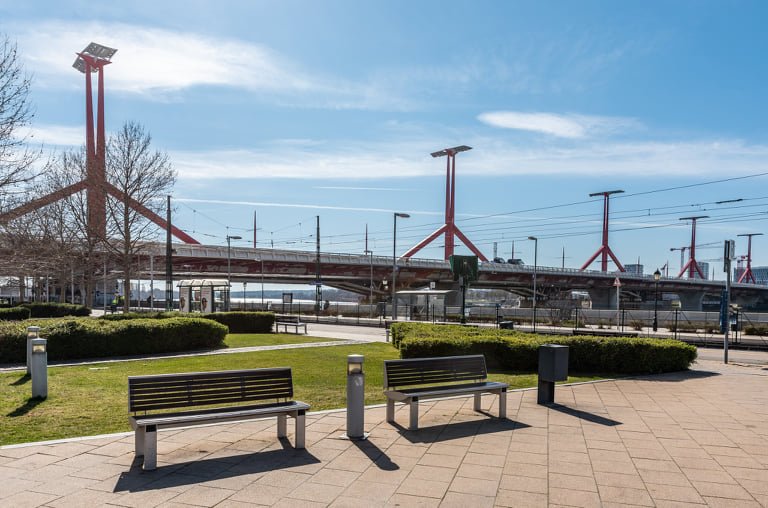The bridges in Budapest, which were destroyed in World War II, were rebuilt in 1964, and even one that had not been built in 1945, when the bridges were blown up, was completed, the Árpád Bridge. In the 1960s, after the restriction on the use of private cars was lifted in 1958, cars began to proliferate in Hungary. Road traffic therefore increased heavily and it was known that it would continue to increase. This process was reinforced by the fact that in 1968 there was a significant turn in transport policy in Hungary, namely that the role of the railway was reduced in favour of the road, i.e., road transport was given priority.

Southern bridges of Budapest in 1968 (Photo: Fortepan/No.: 46923)
The decision was made in a country with a well-developed, dense rail network and small amount of good quality roads. To remedy this, a large-scale highway development program has been outlined by transport politicians. The motorways starting from Budapest, radially dividing the country were to be connected with a motorway ring road to be built on the line of Hungária Boulevard, which would have included a motorway bridge. Its location has also been designated, right next to the Connecting Railway Bridge, i.e., where the Rákóczi Bridge stands today.
In December 1970, the Executive Committee of the Budapest City Council discussed the possibilities of the new bridges in Budapest and named two locations: the connection next to the railway bridge, the Csepel-Budafok area, and called for a tender.
The restricted design contest was announced in 1971. Applicants had to submit their ideas to a bridge that could be built in two phases. The first phase, which would have meant a 2x2-lane bridge, should have been completed by 1982-84, but the structure should have been suitable for expansion to 2x4-lane in the future. The bridge was also important for the cityscape, so in addition to safety, the aesthetic appearance was more important in the assessment than cost-effectiveness. Because there was a massive railroad bridge next to it, applicants could choose two paths, either obscure it with the new bridge, or fit it around the existing structure.

Biuáti's first-prize plan (Source: Városi Közlekedés, Issue No. 4, 1972)
A total of 11 applications were received for the tender, which were exhibited on 15 May 1972 in the clubhouse of the Budapest City Council.
The first prize was won by Buváti, the Budapest City Planning and Design Company, who presented a six-span, pre-stressed concrete bridge. The exterior of the structure showed a very flat-arched bridge behind which the railway bridge disappeared. In the first stage, it would have been made half-width, i.e., with a 2x2 lane, which could have been widened by 4 more lanes later by widening the structure. The bridge and the tender were reported by Autó-Motor on 6 June 1972 as follows:
“The team of “BUVATI” won the design tender for the construction of the southern Danube bridge and traffic connections of the Hungária Boulevard motorway. The Hungária Boulevard ring road, which forms the backbone of Budapest's expressway network and connects the motorways, starts from Flórián Square in Óbuda. The city motorway passes through the Árpád Bridge and the busier junctions of the Hungária Boulevard until the intersection of Soroksári Road and Gubacsi Road, and from there on the motorway bridge - touching Fehérvári Road, Tétényi Road and Bartók Béla Road - after the Osztyapenko Statue, leaves the border of the capital. The new Danube bridge in Budapest will therefore play a major role. The winning design will be a spectacle of the capital with its six-span, variable-height, pre-stressed concrete bridge structure. ”
The bridge would have been built on the pillars of the railway bridge extended to the north, so that the pillars would have been built over the entire width of the bridge. The first phase would have been on its northern edge, i.e., in the event of a subsequent enlargement, no new pillars would have had to be built, only the structure to be placed between the railway bridge and the previously completed structure.

The two-storey bridge plan of the Főmterv (Source: Városi Közlekedés, Issue No. 4, 1972)
However, despite the winning bid, a few months later, on 6 March 1973, Autó-Motor presented another plan to its readers. This presented idea contained a fundamentally different structure, a two-storey truss bridge, the plans of which were prepared by Főmterv, otherwise this plan was also included in the tender, where, however, no significant results were achieved.
The selected truss bridge would have been simpler in that it would have been easier to expand the structure in this case, as the road would have been built on only one level in the first phase, and on the second level during the expansion.
However, none of these ideas came true, a few years later the entire Hungária Boulevard motorway was removed from the agenda, and 20 years later a completely different structure, today's Rákóczi Bridge, was built here, not as a motorway bridge.
Cover photo: The Rákóczi Bridge (Photo: Balázs Both/pestbuda.hu)




































Hozzászólások
Log in or register to comment!
Login Registration